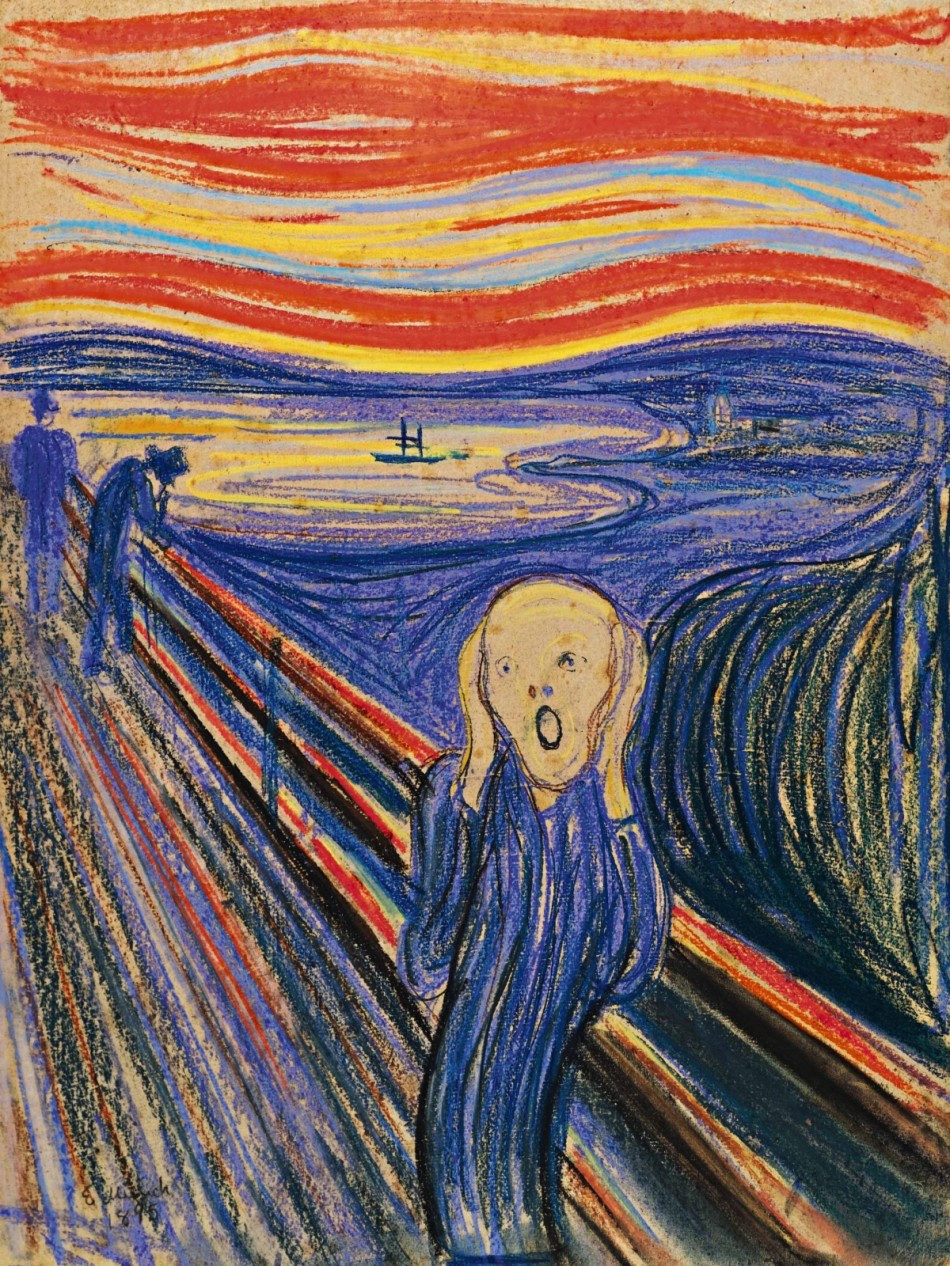
Sotheby's Toasts Munch's Image of Dread
Munch at Sotheby’s — $119 Million of ‘Despair’
Edvard Munch’s “The Scream,” a fourth version of that Nordic icon, conjured up fears about solitude in the modern world and the insignificance of an individual faced with the enormity and beauty of nature.
So much for the existential ambiguity. Sotheby’s auction last night put a price on the oft-stolen and globally recognizable image — $119.9 million.
Munch hadn’t been part of the “canon” of high-priced artists – Picasso, van Gogh, Monet, Renoir, Giacometti, Monet, Bacon, and now Warhol. He wasn’t part of the matrix of Paris-drive modern art (although he did live and paint in Paris – you can see the influence of Gauguin and van Gogh) and you didn’t need an art history degree to feel something when you looked at his work. But the instant readability of the image, popularized far beyond itself with an infinitely expanding universe of parodies, suggested that there might be buyers out there.

$119 million?
Weeks before the sale, I asked a Sotheby’s specialist whether selling the Munch might be a game of “find the Russian”—assuming that new attention-seeking money in the market might be chasing the trophy picture. He said you might also call that game “find three Chinese.” The Chinese have now overtaken Americans as the world’s most sizable chunk of art buyers.
I await news from the sleuthing blogger who can identify the buyer. In the meantime, here’s the prose poem from Munch that led to the image.
I was walking along the road with two friends – the sun set – Suddenly the sky became a bloody red – I felt a tinge of melancholy – I stopped, leaned against the fence, dead tired – looked out at the flaming clouds, like blood and swords [over] the blue-black fjord and the city – my friends walked on – I stood there trem- bling with anxiety – and I felt something like a great, unending scream [passing] through nature.
Another thing. In the German and Swiss press over the last few weeks came news that the picture, sold by the collector Hugo Simon in 1936, and bought by the Olsen family in 1937, might have been sold by Simon to cover losses from persecution by the Nazis, who fled Berlin in the 1930’s. You can find the picture’s provenance on Sotheby’s web site. What is this history of ownership not telling us?
